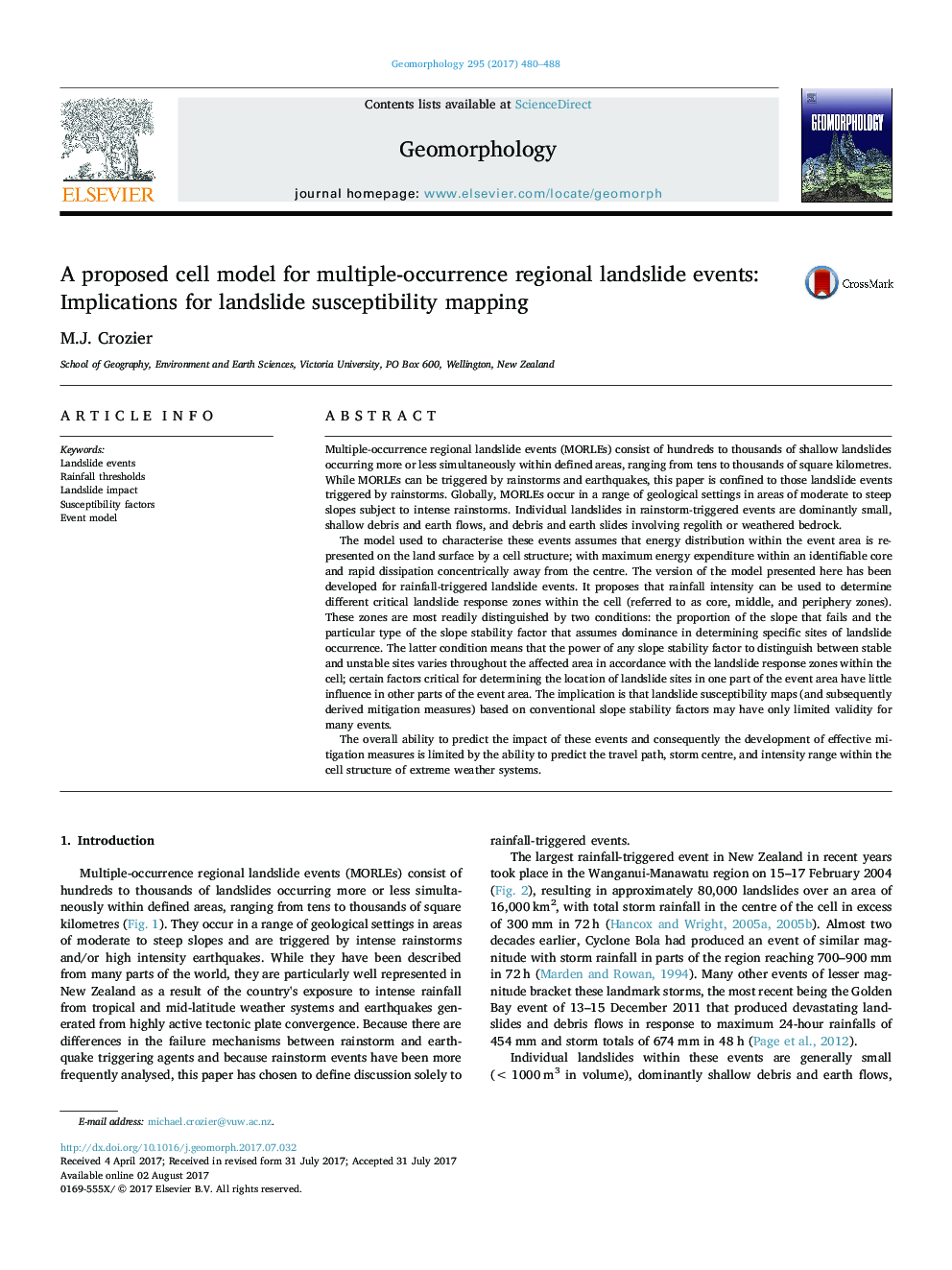| کد مقاله | کد نشریه | سال انتشار | مقاله انگلیسی | نسخه تمام متن |
|---|---|---|---|---|
| 5780770 | 1635355 | 2017 | 9 صفحه PDF | دانلود رایگان |
Multiple-occurrence regional landslide events (MORLEs) consist of hundreds to thousands of shallow landslides occurring more or less simultaneously within defined areas, ranging from tens to thousands of square kilometres. While MORLEs can be triggered by rainstorms and earthquakes, this paper is confined to those landslide events triggered by rainstorms. Globally, MORLEs occur in a range of geological settings in areas of moderate to steep slopes subject to intense rainstorms. Individual landslides in rainstorm-triggered events are dominantly small, shallow debris and earth flows, and debris and earth slides involving regolith or weathered bedrock.The model used to characterise these events assumes that energy distribution within the event area is represented on the land surface by a cell structure; with maximum energy expenditure within an identifiable core and rapid dissipation concentrically away from the centre. The version of the model presented here has been developed for rainfall-triggered landslide events. It proposes that rainfall intensity can be used to determine different critical landslide response zones within the cell (referred to as core, middle, and periphery zones). These zones are most readily distinguished by two conditions: the proportion of the slope that fails and the particular type of the slope stability factor that assumes dominance in determining specific sites of landslide occurrence. The latter condition means that the power of any slope stability factor to distinguish between stable and unstable sites varies throughout the affected area in accordance with the landslide response zones within the cell; certain factors critical for determining the location of landslide sites in one part of the event area have little influence in other parts of the event area. The implication is that landslide susceptibility maps (and subsequently derived mitigation measures) based on conventional slope stability factors may have only limited validity for many events.The overall ability to predict the impact of these events and consequently the development of effective mitigation measures is limited by the ability to predict the travel path, storm centre, and intensity range within the cell structure of extreme weather systems.
Journal: Geomorphology - Volume 295, 15 October 2017, Pages 480-488
